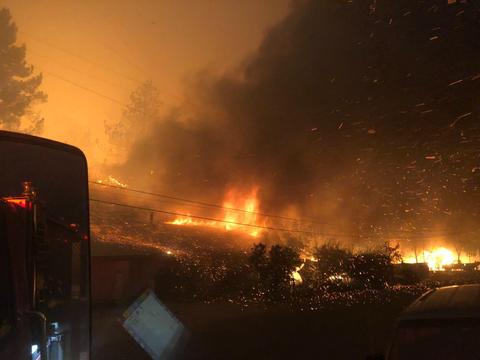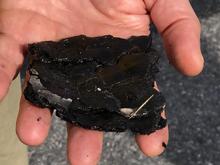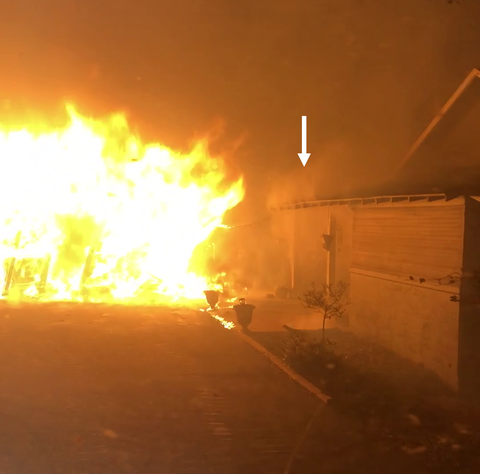Exposures During WUI Fires
Two problems: Embers and Fire ⇨ One integrated approach: HMM
Structures need to be protected from both embers and fire.
Protected structures help protect the entire community.
Embers
Embers are inevitable in WUI fires and may be generated from burning vegetative or structural fuels.
- Embers can travel miles ahead of a wildfire and ignite spot fires ahead of the flaming front.
- Embers can ignite structures and parcel-level features such as parked vehicles, storage sheds, decks, and neighboring structures.
- Embers can vary in size and shape.
- Ember ignitions may occur hours after the flame front has passed.
Structure ignition from embers will depend on the vulnerabilities present on the structure and the intensity/duration of local ember exposures. Burning structures may result in generation of additional embers that are typically larger in size than those generated from vegetative fuels.

Source: CAL FIRE.

Fire
Fire exposures (flames and radiation) can originate from within the respective parcel or from adjacent parcels or wildlands. Like ember exposures, fire exposures can vary in intensity (heat flux up to 100 kW/m2) and duration (seconds to tens of minutes). However, unlike embers that can travel several miles, fire exposures affect fuels in the range of tens of feet, as radiation and convection decay rapidly with distance.

Source: CAL FIRE, annotated by NIST.
Created July 5, 2023, Updated August 28, 2023

